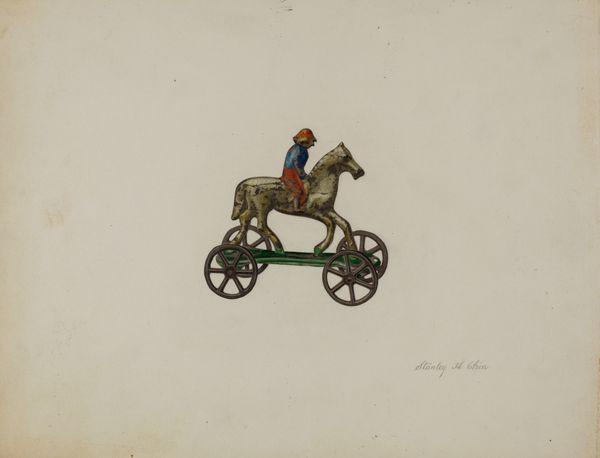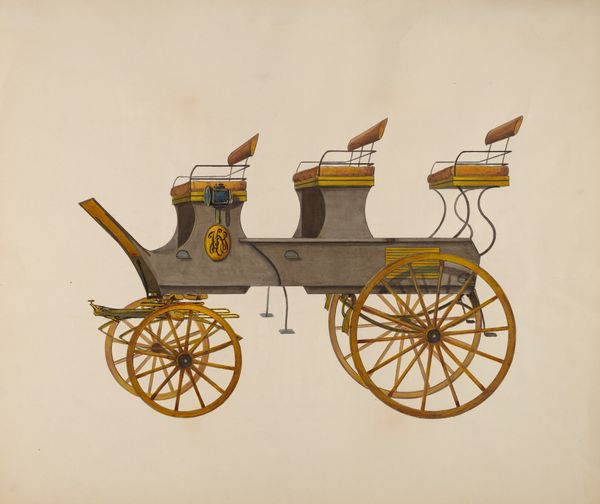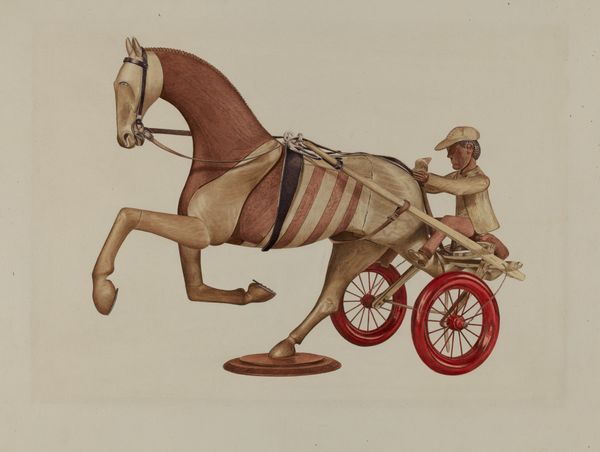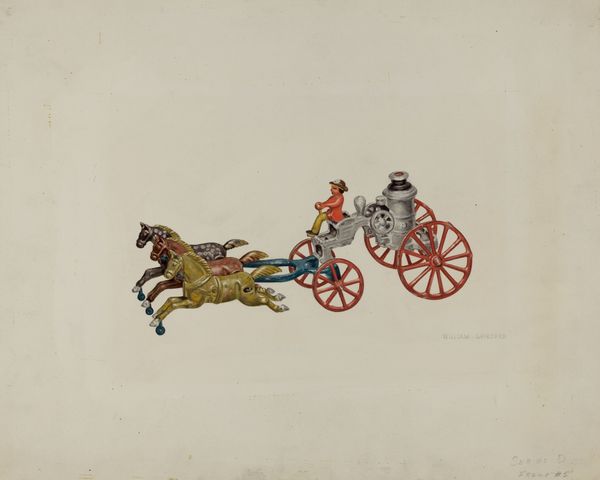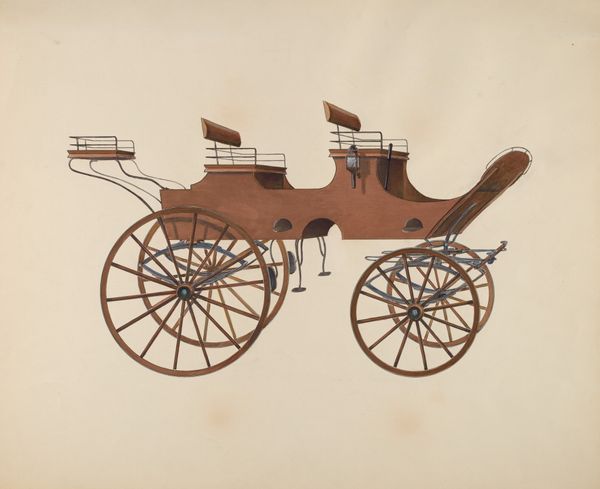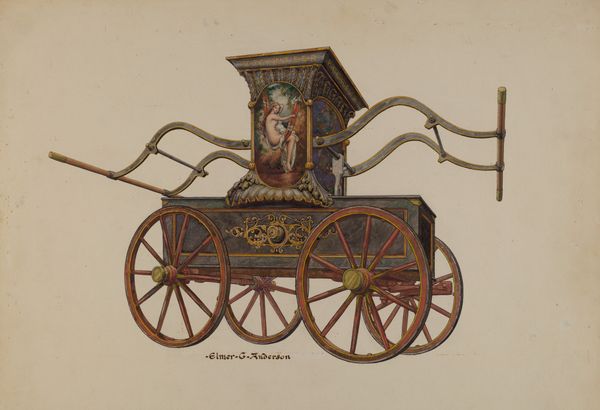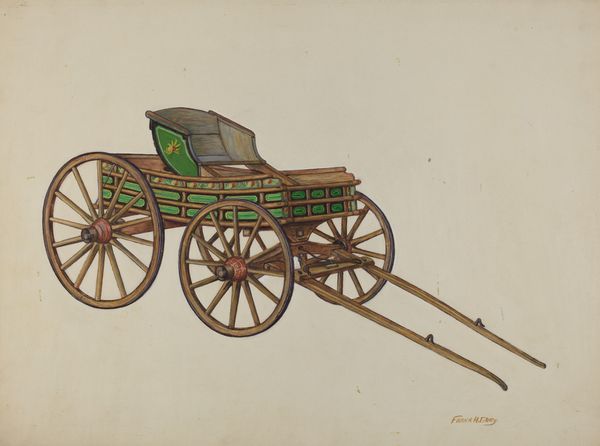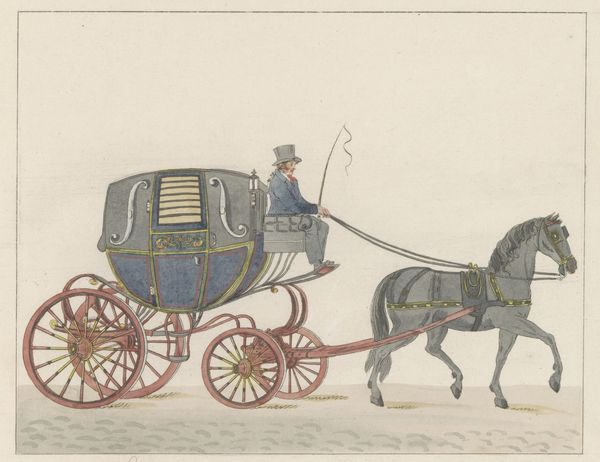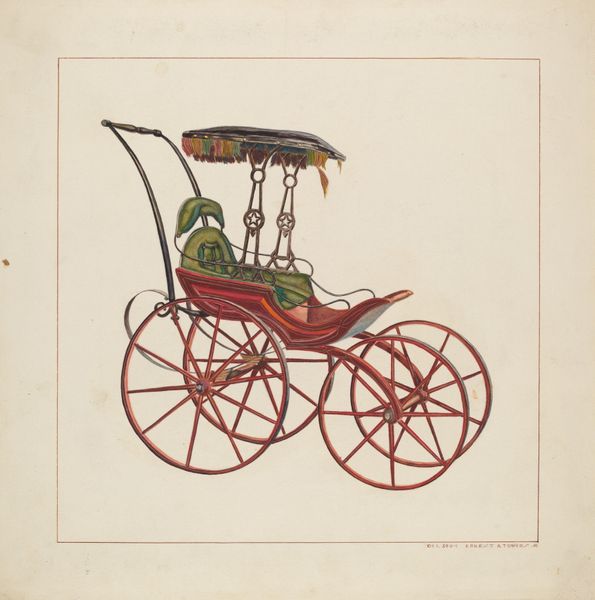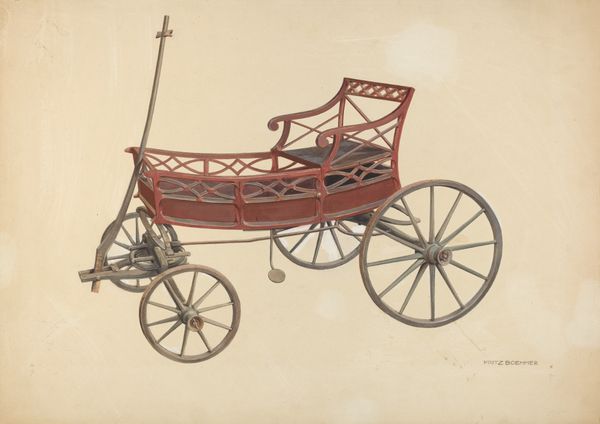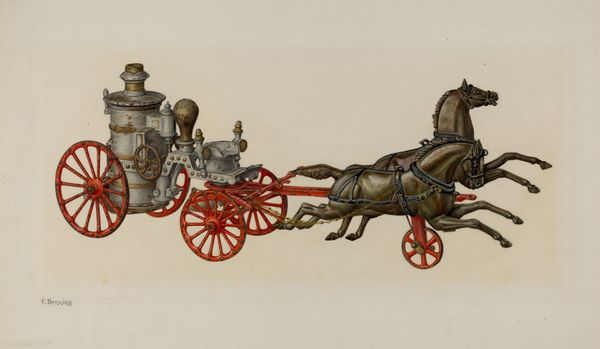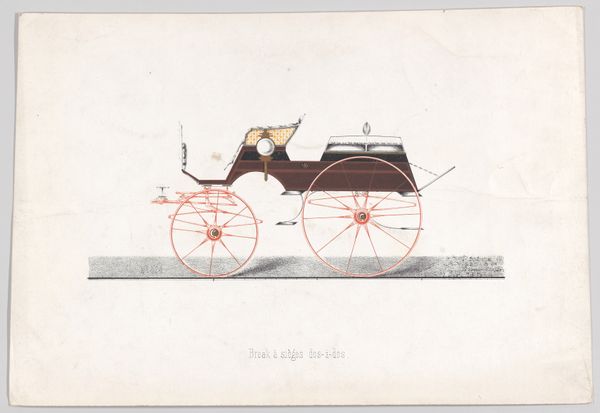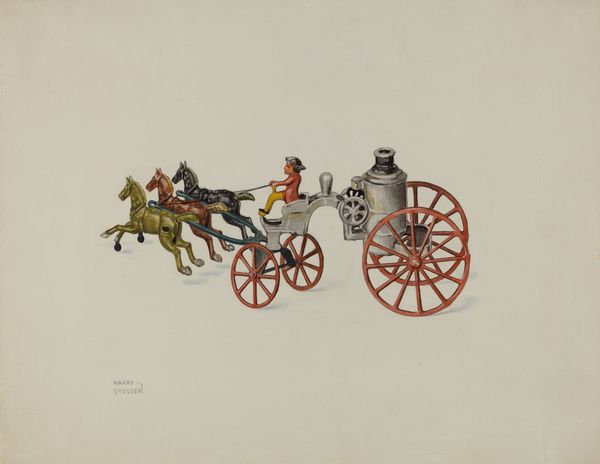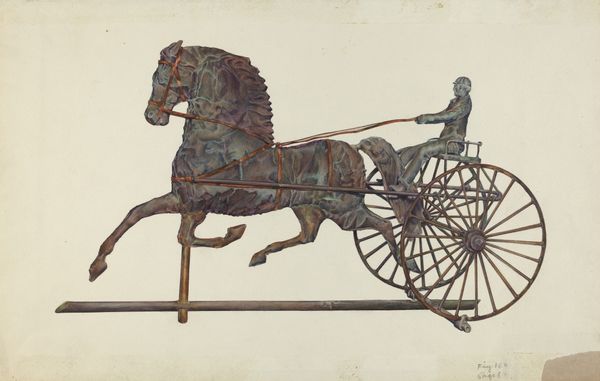
drawing, coloured-pencil, watercolor, pencil
#
drawing
#
coloured-pencil
#
watercolor
#
pencil drawing
#
coloured pencil
#
pencil
#
watercolour illustration
Dimensions: overall: 20 x 27.4 cm (7 7/8 x 10 13/16 in.) Original IAD Object: 4 1/2" long; 1 7/8" wide
Copyright: National Gallery of Art: CC0 1.0
Curator: Looking at "Toy Elephant" created around 1941 using pencil, coloured pencil and watercolour, what strikes you initially? Editor: A sense of childhood and playfulness. Elephants symbolize memory, but seeing one rendered as a humble toy like this makes me think about lost innocence, domesticity, and maybe even cultural appropriation, depending on its specific origins as an object. Curator: Stanley Chin rendered a toy as fine art, made of materials that could be from wartime, making children's objects. He’s flattening the hierarchy between mass produced and the unique artistic creation. It’s such an economical use of available means. Editor: Right, there’s something potent about this symbol made humble. Elephants themselves carry baggage—linked to imperialism and the exotic. That castle-like form atop it can either amplify that imposing presence or domesticate it into something manageable and tamed, for a kid. Curator: Thinking about the red, green and umber, one wonders if the artist had constraints in colour and what sort of labour went into the drawing process. There is care in depiction here, more than one might imagine in capturing child's play. Editor: Yes, those specific colors bring in particular associations. The red suggests passion, even royalty – think about its associations with temples. It's also used decoratively within places of spirituality. While the green provides balance from a more organic perspective, possibly signalling fertility, it contrasts this hard object on wheels, so is a balance between nature and mechanisation. Curator: The colours also might indicate the real thing; are those materials available in wartime? In Depression era society? The colour and drawing, coupled with his artistry, speak to that material moment and how people can render such creativity. Editor: Interesting how the image freezes movement. Is that toy in stasis or ready to roll, laden with history? Maybe that’s what makes this image captivating – that question between cultural past and childhood promise. Curator: Absolutely, and appreciating it means considering both the object's origin and artistic choices. It challenges easy divisions. Editor: Indeed. It’s prompted new layers of thought and emotion around the meaning embedded within a child's play thing.
Comments
No comments
Be the first to comment and join the conversation on the ultimate creative platform.
